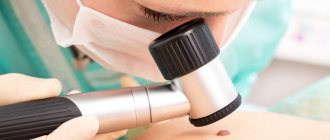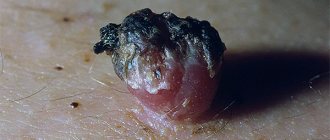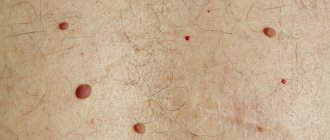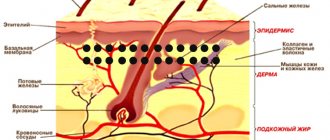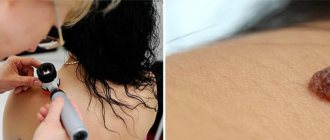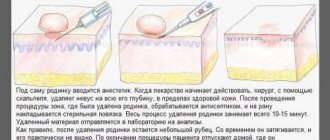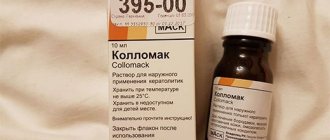Moles or nevi are present on the skin of any person. Some of them are present at birth, others appear in the first weeks of life, and others are formed on the body during adolescence and adulthood. Usually these benign formations do not cause concern to their owner. But when a mole grows, if it has changed color or changed in size, it is recommended to consult a dermatologist for advice and examination. Well, based on the results of the visit to the doctor, you can decide whether to remove the mole or whether it is not necessary.
Why do moles appear?
Moles vary in size, color, and location. They can appear on the face, neck, scalp, back and arms, absolutely on any part of the body. Black, brown, red moles are small, barely noticeable, and can be the size of a pea or even a chicken egg. Flat and protruding moles above the surface of the skin (not to be confused with papillomas) are a consequence of the pathology of epidermal cell division. And the reason for their appearance may be genetic, internal or external factors.
Interesting: Many dermatologists are inclined to believe that a person’s map of moles is laid down during intrauterine development. That is, when a child is born, there is not always a mole on the body. But its location is already determined by genetic factors.
Internal factors that lead to the appearance of moles are hormonal changes (not to be confused with age spots). External factors for the appearance of moles include skin trauma, prolonged exposure to ultraviolet radiation, and burns.
Important: Often teenagers who have entered the phase of puberty discover that they have grown a mole. And during pregnancy, a woman may discover a new formation. With age, the number of nevi on the body increases.
And, by and large, if two or three new moles appear on the skin, there is no reason to worry. Well, if a mole begins to grow, begins to hurt, itch, or bleed, you should consult a doctor. So, if a mole has appeared and is growing rapidly, this is a direct signal for medical consultation.
What is the danger
If an adult or teenager has about 50 nevi, then he has an increased risk of developing cancer than a person who has 10–15 spots. Those people who have many moles on their body should always remember whether it is dangerous and visit a doctor regularly.
Newly formed moles are not dangerous if:
- doesn't itch;
- does not increase in size;
- color does not change;
- there is no discharge of pus or fluid;
- there is no swelling or visible inflammatory process.
In the absence of these signs, it is recommended to independently observe the nevi, and if one of the symptoms appears, immediately go to the doctor. It is important to be careful in areas that are subject to rubbing, scratching or other physical impact, so that the integrity of the mole does not become damaged. If treated incorrectly, an inflammatory process may begin in a torn or completely torn mole, as a result of which the proliferation of cancer cells may become more active.
Particular attention should be paid to birthmarks that are located on the foot and palm. If there is a mole in such a place, it is impossible to avoid rubbing or any other damage that threatens the development of cancer.
Can a benign mole grow?
Moles grow, as already mentioned, under the influence of internal and external factors. They change appearance throughout life - they evenly thicken, turn pale, darken, and grow along with the skin. And if the mole begins to grow, but its increase in size occurs slowly, in proportion to the growth of the body, then this condition should not cause any special concern. These are natural changes in which the risks of the tumor degenerating into melanoma are minimal. Well, if this growth is rapid, the mole shows signs of a dysplastic nevus, it is recommended that it be examined and removed.
Is an enlarged mole a sign of melanoma?
As you know, rapid growth is one of the hallmarks of malignant tumors. This, in the vast majority of cases, also applies to melanoma. How can one distinguish between a normal enlargement of a mole and its transformation into a tumor? Unfortunately, doing this reliably “by eye” can be very difficult even for an experienced specialist.
This is why oncologists always evaluate a complex of symptoms. The history of the existence of the mole, the changes that have occurred to it during this time, the nature of the edge, the degree of asymmetry, bleeding, lack of hair, etc. are important. If only one sign speaks in favor of melanoma, most likely everything is fine with the mole. Two, and even more so three signs of melanoma indicate that you urgently need to see an oncologist.
Based on my experience, I can say that the growth of an ordinary mole by 1 mm per year, as a rule, is not a reason to worry. Although, I must repeat, you cannot evaluate the nature of a mole by only one parameter - you need a complex.
What changes in education are alarming?
The following symptoms should not be ignored:
- The mole has increased to 6 or more millimeters in diameter.
- The color of education has changed. Light or dark spots appeared on its surface.
- The texture, texture, and density of the nevus have changed.
- The edges of the mole have become uneven.
- Both during palpation and at rest, the mole hurts and itches. The skin around the formation is red and swollen.
These changes are unfavorable signs. It is recommended that you seek professional advice immediately.
What do signs say about the color and size of moles?
The smaller the marks, the greater luck awaits you. Many small dark marks are a sign of a true darling of fate. The future promises happiness and wealth, luck in literally any business. If this feature was inherited, the entire clan is marked by higher powers. Perhaps, through generations, its representatives pass on unique knowledge and abilities.
Owners of many small dark moles endure difficulties and are able to make decisions. The life of such people is rich and interesting. From birth, they have developed intuition, which helps them avoid dangers and bad decisions.
Why can there be many red moles? These are the signs of Jupiter. He gives power and wealth. Markings of this planet may suddenly appear and disappear. If red dots have recently appeared on your body, this means that you may soon take a leadership position or make a profitable investment, get a job that guarantees a rise up the career ladder, or achieve success in other ways.
A person who has black moles all over his body has a strong character. These marks are warnings from fate about obstacles on the path of life. However, Fortune generously rewards those who pass its tests with dignity. Those with black moles are overly trusting and quick-tempered. They are usually distinguished by practicality and the predominance of reason over feelings, but in love they are ready for serious self-sacrifice.
What to do if a mole starts to grow?
Make an appointment with a dermatologist. The specialist will collect anamnesis and conduct a visual and hardware examination (dermatoscopy). If necessary, he will remove the formation and send a tissue sample for histological examination.
What can’t be done if a mole has increased in size? You should absolutely not try to “remove” the tumor at home using pharmaceutical or folk remedies. Any unprofessional manipulation is extremely dangerous; “treatment” is fraught with serious damage to the skin and can cause the mole to degenerate into melanoma due to damage and bleeding.
Also, dermatologists strongly do not recommend removing moles in beauty salons that are not suitable for such procedures. Only an experienced dermatologist can determine the need for removal and histological analysis.
Is sunbathing allowed
If there are an excessive number of tumors on the body, doctors do not recommend being under the sun between 10 am and 5 pm. At such times, the sun's rays are aggressive to human skin. When allowed, ultraviolet rays activate the production of pigment that accumulates in the subcutaneous tissue, which leads to the formation of new birthmarks. The conclusion is that you need to sunbathe carefully, using sunscreen.
How is the diagnosis done?
The most accurate method for diagnosing moles is dermatoscopy. The digital device dermatoscope allows you to “enlighten” the formation and enlarge its image. It becomes possible to study the texture and nature of skin pathology. Diagnosis is painless, safe and does not take much time.
Interesting: After dermatoscopy, all examined formations are recorded. At a subsequent visit to the doctor, you can monitor changes in nevi, their size, and shape.
During the examination, the dermatologist decides on the need for histological analysis. Most often, there are no contraindications for mole removal. It remains for the doctor to choose the optimal method.
After the procedure
After removing a nevus, it is extremely important to protect the skin from ultraviolet radiation. You can’t sunbathe in a solarium; you should be in the sun as little as possible. It is recommended to refrain from thermal procedures. It is impossible to remove crusts at the site of the surgical wound; the skin should be provided with maximum rest. After removing a mole on the face, it is not advisable to use decorative cosmetics.
You can learn more about the diagnosis of skin tumors and methods of their treatment at a consultation with a dermatologist at the Galaktika clinic (Moscow).
Indications for mole removal
Direct indications for removal are, as already mentioned, that a mole has begun to grow. Manipulation is also carried out if the formation spoils a person’s appearance or develops complexes. For example, a nevus that appears on the face can look extremely unattractive.
Another reason for its removal may be poor location. If a mole is located on the neck, on the scalp, under the armpits and gets caught by clothing and accessories, this can cause bleeding and secondary infection. And the process itself can cause pain.
Methods for diagnosing black moles
Melanocytic tumors are one of the main problems in diagnostic dermatopathology.
Because they include benign nevi, malignant melanomas and borderline cases.
Apart from the proportion of congenital lesions, most benign nevi occur in early or adulthood.
May eventually undergo regressive changes.
Particular care should be taken if moles and nevi become black.
Laser mole removal
The laser method of treating skin tumors is the most effective today. After all, it is painless, safe, fast and has a minimum of consequences. The laser device allows you to adjust the depth and intensity of the effect on the tissue, so the skin around the formation does not suffer, and very soon the wound heals. This allows micro-surgery to be performed on the face, neck, and other open areas of the body if there is an increase in the size of the mole, without the consequences of the appearance of a scar.
The laser beam vaporizes pathological tissue. And you can remove a mole in one procedure. The rehabilitation period is minimal. Healing of the wound takes 5-7 days. The wound is immediately cauterized with a laser beam, so there is no risk of bleeding or infection.
Important: The procedure is painless, there is no need for general anesthesia. And all because the laser device works in short pulses, pain receptors do not have time to react. The patient does not feel pain. But after the procedure, the wound may burn a little.
After surgery, some restrictions are recommended. For two weeks, it is forbidden to be in the open sun, visit the sauna and steam bath, or apply aggressive ointments and creams to the skin. A dry crust forms at the site of exposure. It cannot be torn off or removed. The wound will heal, and the skin underneath the crust will be completely restored.
Important: The most important advantage of laser surgery for mole removal is the complete safety of the procedure and a minimal list of contraindications.
How are black moles treated?
There are two treatment options - watchful waiting/observation of the patient by a dermatologist and removal/excision of the black mole.
In the first case, wait-and-see tactics are necessary when the chance of developing an atypical process is extremely low.
And the patient does not experience any discomfort from the mole, either emotional or physical.
Surgical removal is recommended when a black mole has a chance of degenerating into a malignant formation.
Or for aesthetic reasons, for example, when localized on the face, genitals, cheek.
The following removal methods can be used to remove a nevus:
- Surgical intervention. The tumor is completely removed. If during dermatological diagnosis it was revealed that the mole is accompanied by a malignant process, surgical intervention should consist of removing a certain edge of healthy tissue to prevent local recurrence.
- Cryosurgery. A procedure that uses a special instrument called a cryoprobe. The device is used to freeze and destroy abnormal tissue. The cryoprobe has a thin end that is cooled by substances such as liquid nitrogen and liquid nitrous oxide. Cryosurgery can be used to treat certain types of cancer and certain conditions that may progress to malignancy. This manipulation is also called cryoablation or cryotherapy. The technique can be used if there are black moles on the penis or in the perineal area.
- Radio wave excision. The procedure is based on the use of a special drug, most often “Surgitron”, which produces high-frequency radio waves. During the manipulation, the pathologically altered tissue is destroyed, while the surrounding epidermis is not injured. When removing moles, radio wave excision is often recommended. During the procedure, the vessel is blocked, so the risk of bleeding is almost zero. A black mole after this type of removal is not accompanied by the development of scar tissue, healing of the excision site occurs quickly.
- Laser removal. Excision of moles with a laser is considered the most effective method. The laser beam is able to penetrate deep into the epidermis, clearly along a given trajectory. This facilitates effective removal of the nevus without blood loss. The procedure is most often recommended for Ota phakomatosis. The procedure has proven itself in removing black moles on the lip and facial area.
How to distinguish a seborrheic mole from dangerous symptoms
A rough mole can frighten the wearer with its unusual appearance. Outwardly, it may resemble melanoma; only a doctor and diagnostic measures can accurately determine the type of tumor.
The main differences between seborrheic keratosis and an oncological tumor:
| Factor | Keratosis | Melanoma |
| Risk group | People over 30 years of age whose skin is susceptible to aging. | Can be diagnosed at any age. The patient may be a small child, an able-bodied adult, or an elderly person. |
| Form | A round or oval growth with clear boundaries. It has the ability to grow and thicken up to 1-2 cm. | Formation over 6 mm. |
| View | Flaky mole. Flat or slightly convex appearance. It may look waxy, as if painted on the body. | A spot or raised element that is in the stage of active growth. |
| Symmetry | Complied with. | Violated. |
| Color | Uniform or interspersed with white and black. | It changes and takes on several shades. |
| Borders | Smooth. | Vague with jagged edges. |
The dry growth is dense to the touch, like a dangerous nevus, but it does not hurt when touched, at rest. A painful syndrome can develop when irritated or damaged, then the skin around it itches, and secondary infection can occur.
If a person is accustomed to unusual spots on the body, he may miss cancer. Patients with keratosis are recommended to regularly visit a dermatologist and undergo diagnostics.
Melanoma is on the rise. Its increase occurs quickly: by 1-2 mm per month or more.
Should I worry?
There is always cause for concern with any change in a birthmark. To independently study the problem, you can take into account the signs of a dangerous neoplasm, ACCORD:
- A (asymmetry) – if, when the axis is drawn through the center, the halves differ;
- K (edge of a mole): smooth – healthy, jagged, torn – dangerous;
- K (blood) – there is no bleeding from a benign mole;
- O (color) – a healthy birthmark is evenly colored;
- P (size) – small birthmarks in rare cases can degenerate, the larger they are, the more dangerous;
- D (dynamics) – development of any of the previously described signs.
During pregnancy
Carrying a child is a time when the mother’s body is subjected to serious tests. Hormones responsible for all processes in the body cannot cope with both and are produced in increased quantities. Therefore, the reason for the appearance of new marks depends directly on this process and means the normal functioning of the hormonal system. They often disappear over time.
Hanging moles may appear on the neck. In the abdominal area, due to constant stretching of the skin and poor vascular activity, red growths may appear in this area. This is considered normal. However, if new or old moles begin to cause discomfort, swelling, burning or itching, be sure to find out the opinion of your therapist on this matter.
